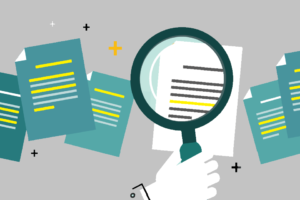Technical Document Research
Technical writing is an essential aspect of any digital service, and creating a technical document requires a lot of research and planning. Technical writers need to identify their target audience, understand the purpose of the document, and plan their content accordingly. In this article, we will discuss the importance of research in technical writing and the proven methods that can help you develop an effective technical document.

Your first step towards developing the required technical document.
Why Research is Important in Technical Writing?
Conducting an effective research helps technical writers gain insights on the following aspects.
1. The Purpose
Understanding the purpose of the technical document helps the writer identify the right direction to move forward and bring clarity to the scope of the document.
For example, if the technical document is intended to help the customer support team answer queries on call or chat, the writer can focus on creating content that is relevant to this purpose.
2. The Audience
Identifying the target audience is crucial as technical documents are designed to communicate technical information and instructions to a specific group of people. The research findings can help the writer identify who the audience is, how they use the technical information, and the level of detail to include in the document.
For example, if the target audience is the customer support team, the writer can tailor the content accordingly.
3. The Timeline
Determine the timeline for the document delivery of the first, the second, and the final draft. This helps technical writers prioritize and practice time management to be aligned with the deadlines.
For example, if the technical document is part of the go-live checklist, the writer needs to ensure that the document is ready before the digital service goes live.
4. The Outline
Jotting down the tentative topics/chapters and components to be part of the technical document is essential. This helps the writer stay organized and focused on the content.
For example, an outline may include an introduction, procedure, table of contents, list of tables and figures, and other relevant sections.
5. The Format
Identifying the required format, multimedia, map, location, and means for delivery is crucial in technical document research. This can help the writer select the appropriate format that best suits the target audience and the purpose of the document.
For example, if the technical document is an online help project, the writer needs to ensure that the content is available in the required format and location.
6. The Resources
Identifying the resources required for the documentation project and obtaining relevant inputs, flow details, and review feedback is crucial. This can help the writer ensure that the document is accurate, complete, and meets the required standards.
For example, SMEs, cross-teams, illustrators, reviewers, or approvers can provide valuable inputs and feedback.
7. The Plan
Considering the insights gained from research, compiling a documentation plan for the project team’s and relevant stakeholders’ approval and reference is essential. This can help ensure that the document is developed according to the approved plan and within the specified timeline.
Proven methods for in Technical Document Research
Here are some proven methods that can help you conduct effective technical document research:
- Analyze existing documents and content relevant to your project to identify the essential information to be part of your document.
- Value SMEs’ and other stakeholders’ time by preparing your questions and sharing them before the discussion for the SMEs to be ready. Inform them if the session is going to be a brainstorming or question and answer.
- Play with test or stage and get acquainted with the required UI, UX, menu or flow, etc.
- Organize conferences with cross-teams to clarify your findings and queries.
- Conduct internal surveys for advance information


